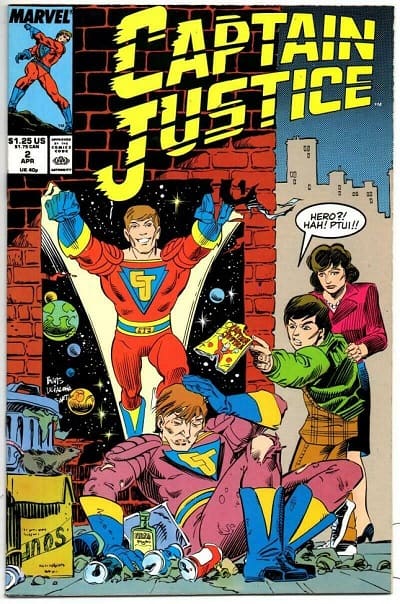Throughout the history of television, there have been many shows that either died in the pilot stage never making it to air or got greenlit as a series, but didn’t make it past the first season, usually only lasting a few weeks before low ratings cause the studios to pull the plug. Some of the shows deserved more than what they got, and some of them should never have made it as far as they did. With the passage of time most of them slip into obscurity, being categorized as “Forgotten Television”. In this new ongoing Comic-Watch articles we will be examining a few of these unremembered shows.

Once A Hero (1987) premiered on September 19th, 1987, and lasted all of three episodes. The Story revolves around Abner Bevis (Milo O’Shea), a comic book artist, whose most famous character, Captain Justice (Jeff Lester) is about to get cancelled due to low sales. The readers want a more up to date character, tiring of the puritanical morality within the book. Bevis begins to suspect that fictional characters physically exist in another dimension, and eventually Captain Justice crosses over the “Forbidden Zone” and appears in the real world, but without any of his powers. Joining him is Gumshoe (Robert Forster), a hard-boiled detective along the lines of Sam Spade. Abner must now help his creation adapt to modern times with the two of them learning from each other how to live a better life, with Gumshoe being a font of 1940s cliched lines of wisdom and being the consummate voice of reason.

The show was billed as an “action-adventure” series, but there was very little action or adventure, and it wasn’t really a sitcom, although it did show certain humorous elements. In reality, the show felt more like a “dramedy” focusing on the relationship and character growth between Abner and Captain Justice. Unfortunately, the show never really found its footing and to be quite honest, it was pretty boring, even by 1980s standards. There was no special effects to speak of, but “Pleasantville”, the fictional city where Captain Justice fights crime in the comic books, was imaginatively articulated, with live action actors playing against sets that looked like comic book drawings and all the characters dressed in bright primary colors. The actors were well cast for what they were trying to accomplish. There was a likeability to the characters and a realistic approach in the acting styles. Where the situation they were in was over the top absurdism, the performers never fell into the trap of overacting.

A couple things are credited with killing the show. An earlier pilot was made with a different actor in the main part. The actor, Jim Turner, was cast against type as an ongoing joke, but apparently this did not work well, and a new actor was chosen. But the original pilot had been viewed and by word of mouth the series was given a bad name. In addition, on the night of its premier, many ABC stations opted to show Star Trek: The Next Generation instead, correctly believing it was the more viable show. In March of 1988 the show did get a second life when Marvel Comics published a two-issue comic book spin-off called Captain Justice. Like the television show, the comic focused on a hero from a by-gone era whose readers have stopped believing in him, and if he cannot renew interest, he will fade away forever.
